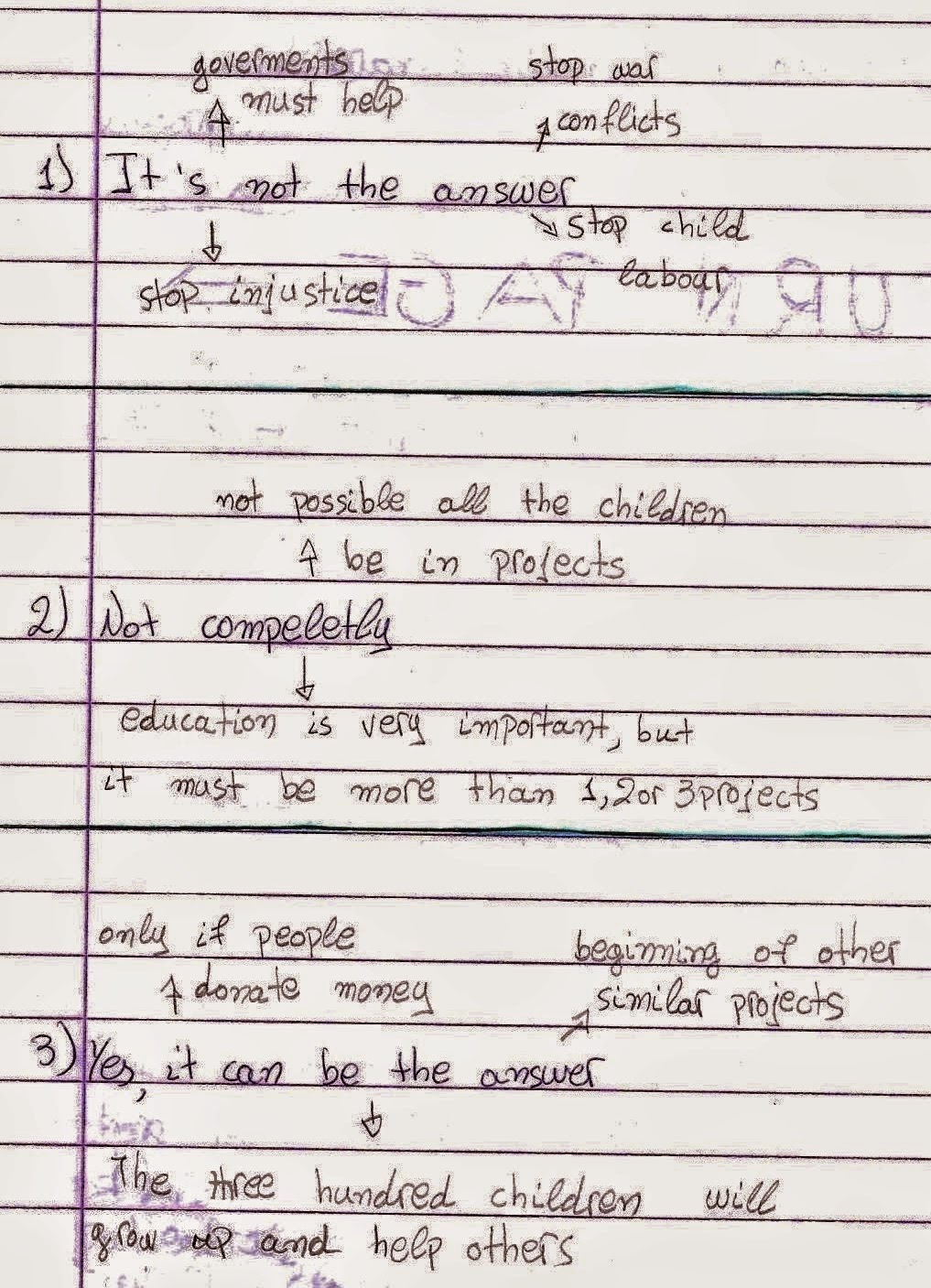Description: This lesson proposal is organized around the theme of school through the use of paintings, illustrations, photography, and video. The Visible Thinking routines used are: CHALK TALK, What makes you say that? and See-Think-Wonder.
Level: Intermediate
Learners: 11+
Theme: School
Language: School related vocabulary
Skills: Making connections, observing, describing, watching, speaking, note taking
Materials: Paintings/illustrations/photographs slides, a short video
Step 1
Show your students the four visual prompts. Ask them what they have in common. Elicit that all four of them deal with school. Write the word school on the board.
 |
| Future Hereux au Japon, Weekly Shōnen Sunday (1969), Japanese manga |
 |
| At school, Jean Marc Cote (1901) or Villemard (1910) |
 |
| The naughty school children, T.E.Duverger (circa 1850) |
 |
| The Country School, Winslow Homer (1871) |
Step 2
Introduce the CHALK TALK routine. Place large sheets of paper on desks around the class. Place markers at each table.
Give learners a general prompt to reflect on like:
Give learners a general prompt to reflect on like:
''What are your ideas, thoughts, feelings, and questions about school?''
Invite them to move around the classroom, write down their thoughts, read what others have written and comment on the CHALK TALK papers. Point out to students that this routine has to be performed SILENTLY. They can move around freely, reading and commenting, but they cannot talk during the routine.
Invite them to move around the classroom, write down their thoughts, read what others have written and comment on the CHALK TALK papers. Point out to students that this routine has to be performed SILENTLY. They can move around freely, reading and commenting, but they cannot talk during the routine.
This is how a group of students I worked with responded to this routine.
Step 3
Show your students the four visual prompts again, and brainstorm a plenary discussion. Ask questions like:
What do you see?
Do you think the school settings are modern or old?
How are they similar or different to your classrooms?
Forms of punishment?
What strikes you as strange?
What titles would you give?
Step 4
Show students Jon McCormack’s photograph, and ask:
 |
| Jon Mccormack Photography |
What’s going on?
What do you see that makes you say that?
Then show the second one, and ask:
What do you see?
What do you think about it?
What does it make you wonder?
 |
| Jon Mccormack Photography |
I used post it notes to make students' answers visible and it looked like this:
Step 5
Write 101,000,000 on the board. Have students guess what the number refers to. Tell them that it is the number of children out of primary education worldwide according to the 2008 UNESCO global database and statistics. Show the pie chart, and ask individual learners to read the numbers aloud. Ask where the biggest and the smallest numbers appear. Ask them why they think this happens.
 |
|
101 million children of primary school age are out of school
|
Tell them that the photographs they saw were children in rural southwest Kenya who use Kindles in their classroim, as part of the Kilgoris Project. Explain what a Kindle is if they are unfamiliar with it (a thin, lightweight, electronic device for reading downloaded books, newspapers or magazines).
Step 7
Ask students to write, in groups, 3-4 questions they would like to ask about the Kilgoris project. Tell them that they are going to watch a short video about it, and they can see if any of their questions are answered. Show the video.
The Kilgoris Project : Education / Health / Opportunity from peter berg (fotonimo) on Vimeo.
Step 8
Get feedback from the students in a plenary discussion. Brainstorm students around similarities or differences between their lives and the Kenyan schoolchildren’s lives.
This is what came out from our class discussion:
Step 9This is what came out from our class discussion:
Ask students to revisit the Chalk Talk papers and add on more comments and thoughts after having completed steps 3-8.
Some of our finished CHALK TALK papers looked like this:
Step 10
Ask students to reflect on the question: do you think projects like this are the answer to children’s illiteracy in the world?
This is how a student distilled creatively the plenary discussion we had:
And another one through note taking:
I hope you find this proposal worth experimenting.












4 comments:
Μπράβο! Ὑπέροχη δουλειά! Σκέτη ἔμπνευση...
Ευχαριστώ πολύ Flora, χαίρομαι που τη βρίσκεις ενδιαφέρουσα :)
Dear Chrysa,
I just loved this lesson plan. Full of culture, food for thought, a wonderful way to teach through paintings and reality. the paintings speak for themselves; and the video (the kilgoris projetct)... y God I was speechless.
In my native tongue when we come across with something that makes you speechless we say QUE CEREBRO PRIVILEGIADO. It means WHAT A PRIVILEGED MIND this person has. So, you have got a privileged mind. my students were so happy and learned a lot. Thanks! My best regards, Ana *from Brazil)
Dear Ana,
Thanks a lot for commenting and for your kind words. I am really happy you and your students enjoyed working on this lesson proposal. :)
All the best,
Chrysa
Post a Comment